Why add fun?
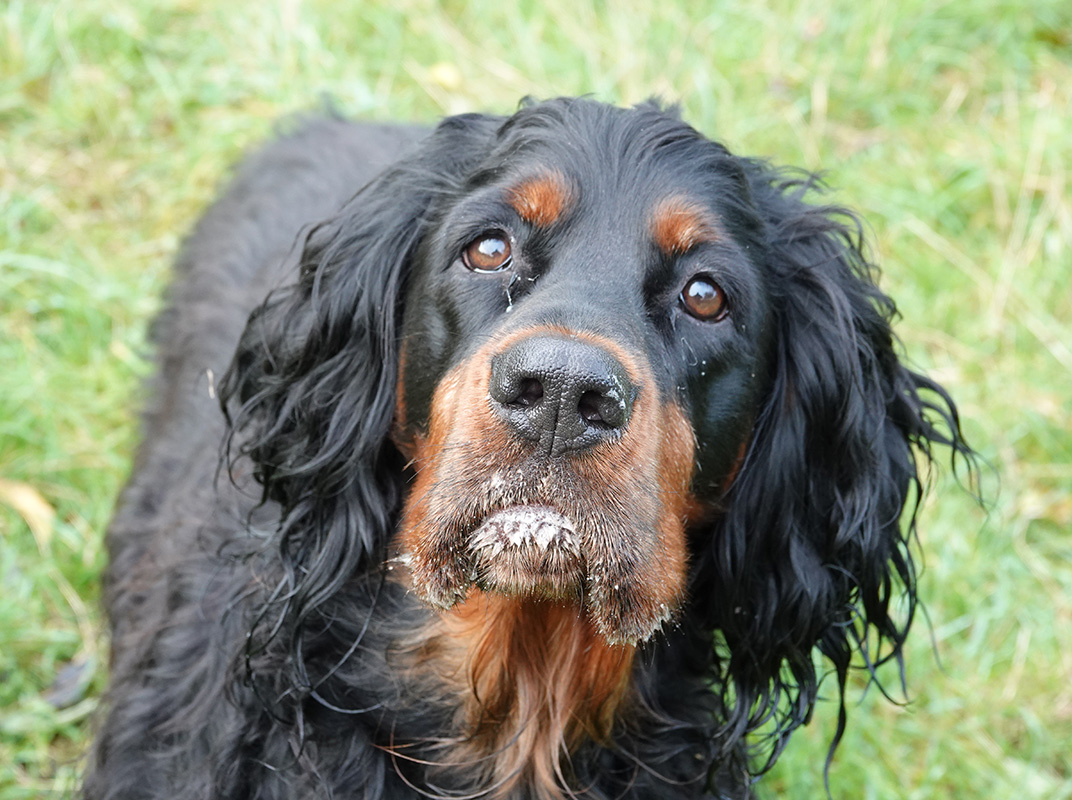
Fun is cheap
A “fun day out”, such a “fun” activity, or making training “fun”, are common marketing descriptions used to attract you to participation in an activity with your dog. As with many interpretations what is one person’s idea of fun is not another’s. Think of the people put through horrendous physical challenges in TV games where mud, a smack in face and being catapulted into a pool of water are marketed as fun, but are really show cases for spectators anticipating pain and embarrassment of another. Neither is “fun” in my book.

Nowhere in my universe would I consider this “fun”
I want what you have
When we see someone, particularly those we identify with, having fun, perhaps a new game on their phone, a new gadget, a new toy then we yearn to be able to enjoy the same experience. We are attracted to this. This is a potential reward. An object, or activity that may bring us pleasure.
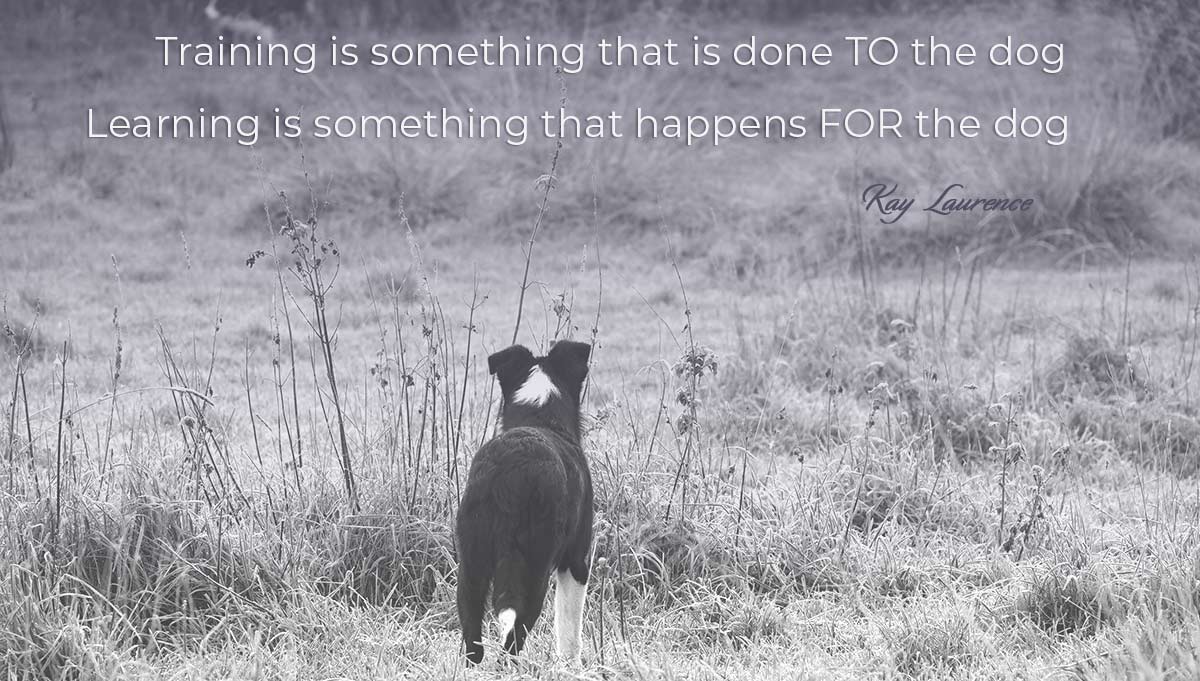
“Fun” is an easy, throwaway label short of real information – what type of fun? By exchanging the adjective “fun” with pleasure, we can become a little more discerning in seeking the rewards. We can experience pleasure from standing still and enjoying a view, absorbing a picture, reading a book, watching sports, being entertained or participating.
If you have experienced pleasure, there is likely to be a desired for repetition and a sense of loss when that experience has ended. When satisfaction and fulfilment are part of the process the experience has more completion. A hill climb that achieves the view, learning to take photographs that produces a picture that you want to look at, repeatedly. The effort invested that results in pleasure gains more likelihood of repetition. Decorating a room over the weekend will give repeated pleasure through the next few weeks.
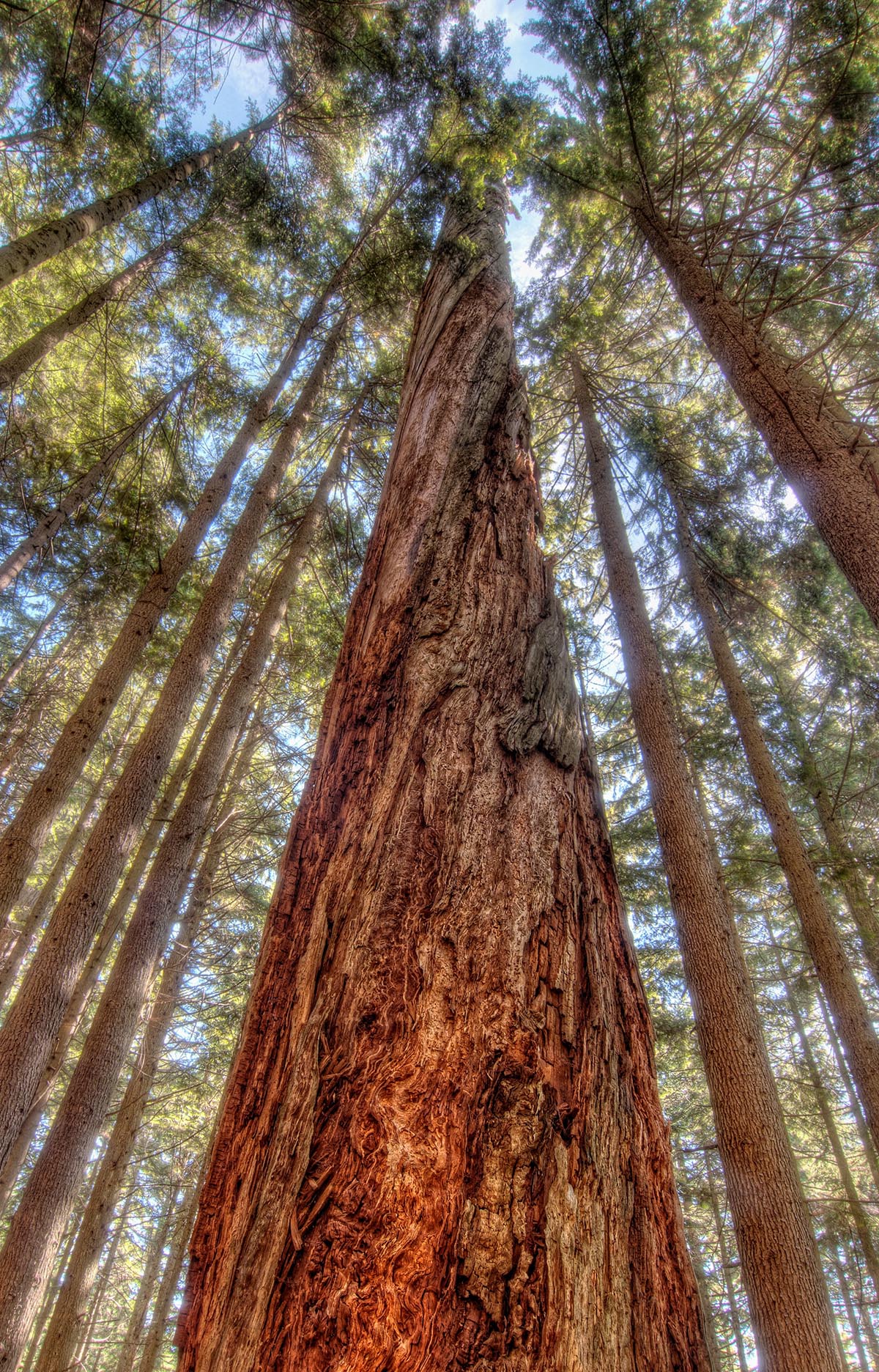
Releasing behaviours
When we play with a puppy or older dog the activity will release natural behaviours: the dog that finds pleasure in carrying, running, chasing, stalking or making you laugh out loud. We add the label “play” but this is truly nature’s form of learning. This is probably quite different from the step-progression that humans are attracted to where we learn our skills in a structured format: first we add numbers together, then subtract, multiply and eventually arrive at complex computations or learn individual letters, then words, then sentences and later a book.
Shaping within the game, or during play activity, is closer to an art. Participation releases the natural skills, we can discover the differences each individual sees, or imagines, or ways of expressing the same subject. We can teach art on a step by step basis, but it is likely to resemble format learning, all painting the same picture, the same way, and at the risk of suppressing natural expression.
As we shape the learning through activities, we need to remember we are likely to have been shaped by a step-by-step teaching format, not only in maths, but in dog training. We want to find the ABC structure, and fall back on the human labelling of “work and “play” being different categories. For a dog, they are the same thing: they are ways of learning to gain more and better rewards.
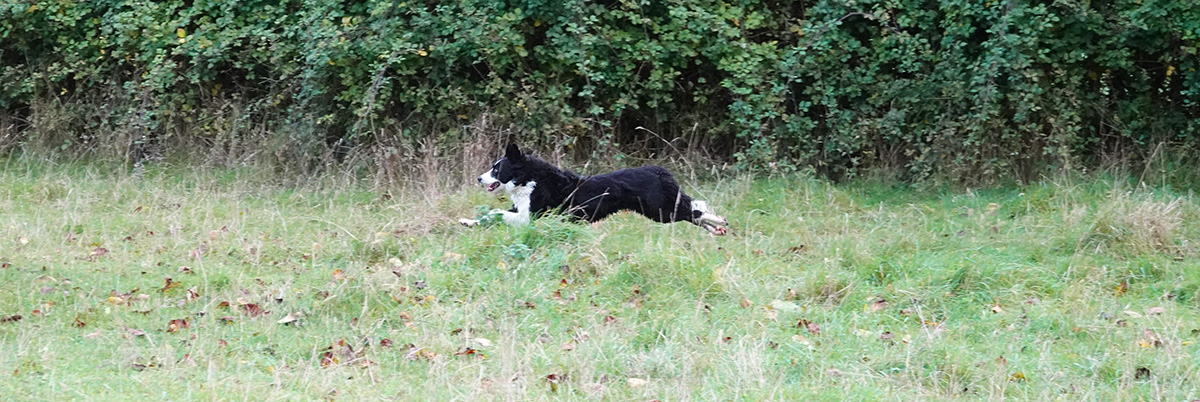
A runner who finds pleasure in just …..running
What is the reward?
We cannot more forward when labelling reward as a “thing”.
“The reward is a piece or food.” Hmm … not always.
“Playing tug is rewarding.” Hmm … not always.
“REWARDS ARE NOT DEFINED BY THEIR PHYSICAL
PROPERTIES BUT BY THE BEHAVIOURAL
REACTIONS THEY INDUCE.”
(Schultz)
Although we want certain activities, or objects, or events to be a rewarding we must always look for the evidence. Schultz defines it as: “any stimulus, object, event, activity, or situation that has the potential to makes us approach and consume is by definition a reward”. The keywords for us are “approach” and “consume”. Which does not refer to eating, but enjoy. We can consume a picture, or view, by standing looking at it and admiring it, for instance.
Learning is the process by which all animals gain more and better rewards – that is the function of learning. If we want our dogs to learn a specific process then we present more and better rewards and they focus their learning, and improvement of it, to gain those rewards.
We then need to consider that for each individual in each situation rewards have a value, and this can change. For some dogs, certain learning has more reward value, and for some dogs, different situations have more reward value. We may not know their reward value and this must be assessed for each situation, each learning medium (game), each repetition. Mistakes can be made when we assume “this dog likes ….” and consider that a blanket application.
What the dog finds rewarding will change over time as they develop maturity and competence. As they improve a challenge to apply their learning to new situations becomes a pleasure.
We are also bias to previous learning, our own choices and history.
Schultz: Value is not a physical property
but determined by brain activity
that interprets the potential effect
of a reward on survival and reproduction.
This may sound a bit clinical, but a dog may consider the reward value of pleasing us on the potential effect of their survival and reproduction. “Will we continue to provide food and shelter?” and that unmeasurable need-pleasure for both dogs and people: connection. Many dogs we share our lives with are particularly susceptible to that need, which is a key component of their selective breeding to be able work in partnership with people.
Doing stuff with you is going to be a reward for most dogs, as a base line, provided we do not push them too far.
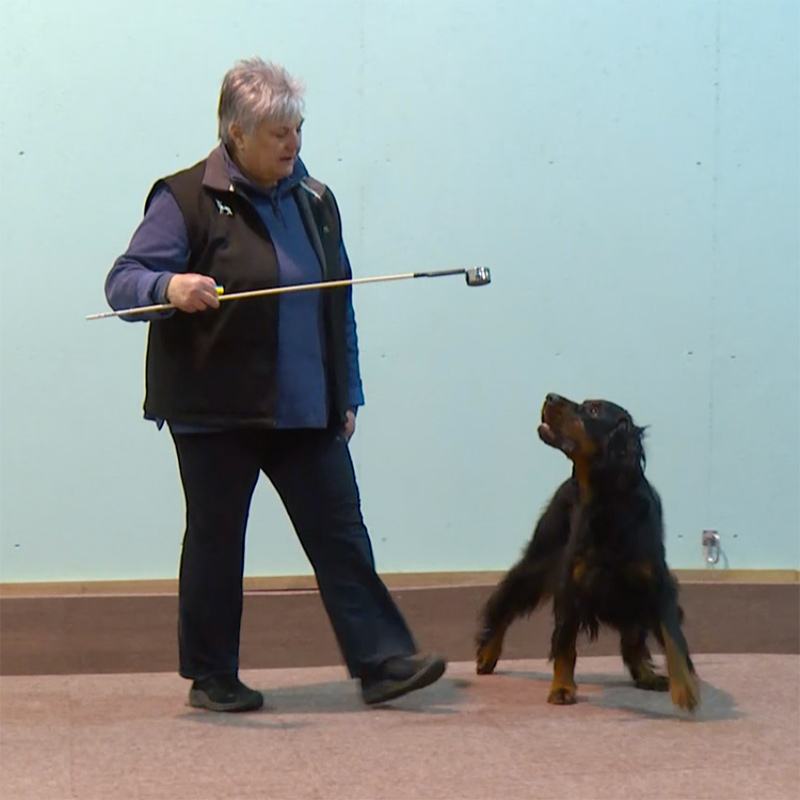
Our games, our play
The games and different approaches to play activities are a mixture of exploring the rewards for each individual and gauging which rewards are the highest value. If we look at just one game: sharing a held toy, the way a Labrador will play will not be the same as a Sheepdog, will not be the same as a Dachshund. There will be subtle differences in the pleasures they enjoy as participants.
We also need to consider another brain function; reaction to movement. This is not a direct part of the approach-and-consume reward system. It is not about activating pleasure, but a biological function that reacts when movements within range of the dog are over a certain speed. The reactions may vary from alert observation to grab-bite.
Two key considerations:
within range + certain speed.
If a movement is too far away the reaction is not activated, if is it too slow it is not activated. I would also add, not perceived individually – ie: many cars moving fast, or many balls, will not trigger a reaction, possibly because there is not an individual movement to single out. But a single motor bike, a single car, a single ewe – the dog will be on it.
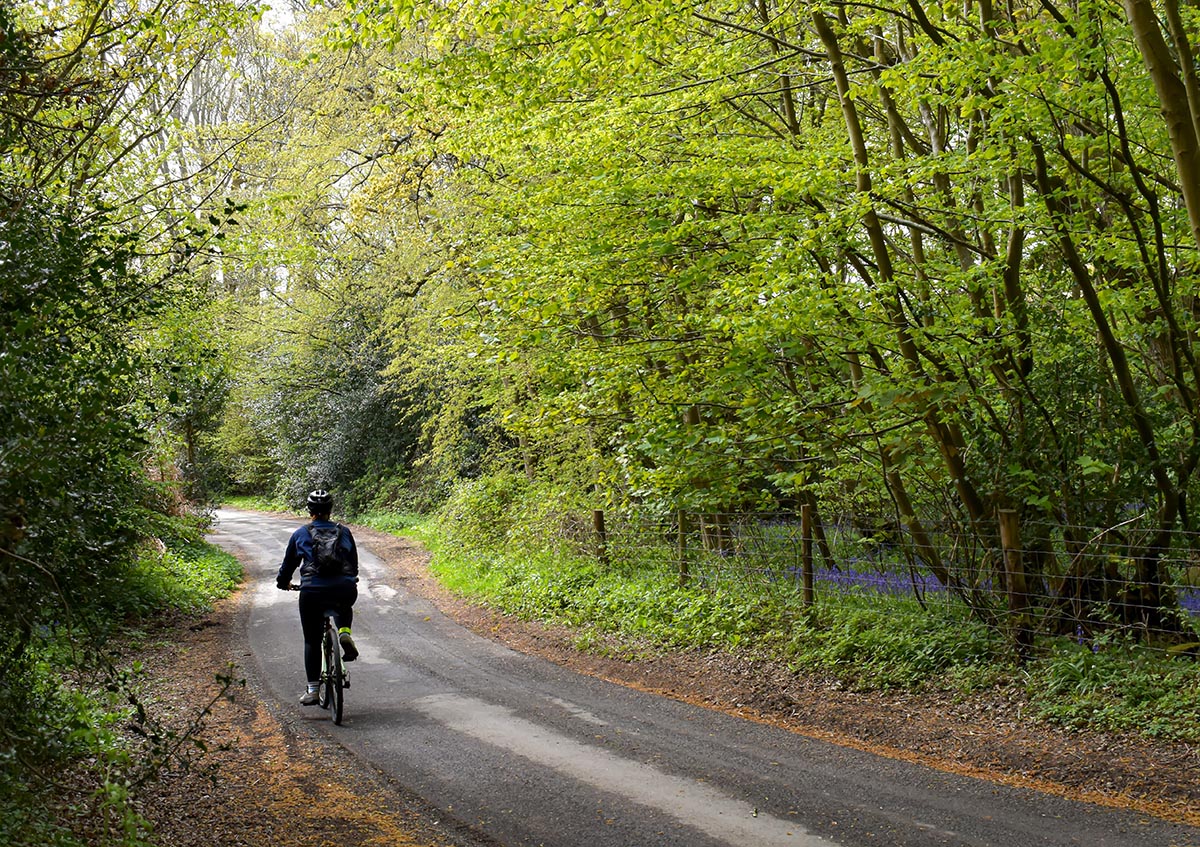
We would enjoy a quiet walk down this lovely road, but the arrival of a lone cyclist would present an reactive response from Zip.
Within our games: ball, disc, tug toy are all individual movements, each will move differently and we will launch the movement of each in a different action. Throwing a ball will look like a different pattern to throwing a disc. We will set up the dog to learn to make a distinction, discrimination of what to react to and what to not react to. This is part of the learning they will be doing in play-activities, some dogs react to everything and some dogs react to nothing. The throwing action of some people are much more worthwhile attending to than others.
We can then add a reward value to that process of reacting with their pleasure of capture. This then blends the reactivity into their capture or chase skills and increases their learning.
In human sports we often see athletes using a different activity to build skills that they blend into their selected sports. Andy Murray is famous for his Keep Uppy games to enhance his ball-eye co-ordination, or reactivity.
What is a brain function (reactivity) present in all of us for survival, with sheepdogs and other predators is enhanced, which is why we see many sheepdogs becoming traffic chasers and all the rest. In you and me, it is the difference between seeing a wasp over the other side of the room, and seeing one near our head in our peripheral vision. One makes you consider moving away (the opposite of approach and consume!) the other makes us duck and flinch in reaction. If you additionally have a potential allergic reaction then your skill of wasp detection is increased and you will learn the sound and movement and enhance your retreat skills.
This is the difference between a ball to catch by blocking and a ball going close to our head. Learning activities, or games, blends together the inherited reactivity skills and rewards from preventing escape movements.
So much more than “just a game”. This is his school room, constantly learning, upping his skill levels and applying what he has learned to new formats.
I expect this to be a moment that scrambles your brains. It is a lot to think about. I have played sheepballs with a few hundred dogs, some of which are not sheepdogs. We have had Poodle-balls, Cocker-balls, Labrador-balls and even Chihuahua-balls. Many enjoy the chase and grab and many have the base line reactivity, but non-working breeds do not exhibit the NEED behind the responses. That need that keeps a working bred dog in the game until they drop, that need that overrides personal welfare and causes injury.
In other words the dogs with the greatest need are considered the “work all day”, guys, which I can affirm, do not make good house dogs, let alone companion-pets. One of mine, when indoors, would “work” the raindrops coming down the windows. She lived outdoors and happily followed butterflies and bugs between the paving slabs in the barn when “resting”. She could no more lie at my feet when working on a computer than bakes scones.
Build reward into the activity
We invest our time in learning a range of different activities, call them play or games, and learn how to identify the elements that give this individual dog the greatest pleasure. This always needs monitoring as it will change over time and depend on who is engaged as the other player. It is easy to get carried away with our own pleasure from the activity, which may be at a cost to the dog.
We are building reward value and learning their skills, alongside developing our own. Our personal pleasure in seeing their enjoyment is also added, along with a personal preference of game choice and our style of play. The dogs will detect which we prefer, and those we struggle with.

The difference is about building an activity that is intrinsically rewarding, not trying add fun as a reward to make it more palatable.
Our task is about seeing the subtleties in an activity that enhance the pleasure, whether this is walking side by side, jumping, running, carrying, scenting, exploring, being groomed, or just companionship. For too long we have used the reward as a post-activity consequence and been able to ignore whether the learning process was rewarding in itself.








